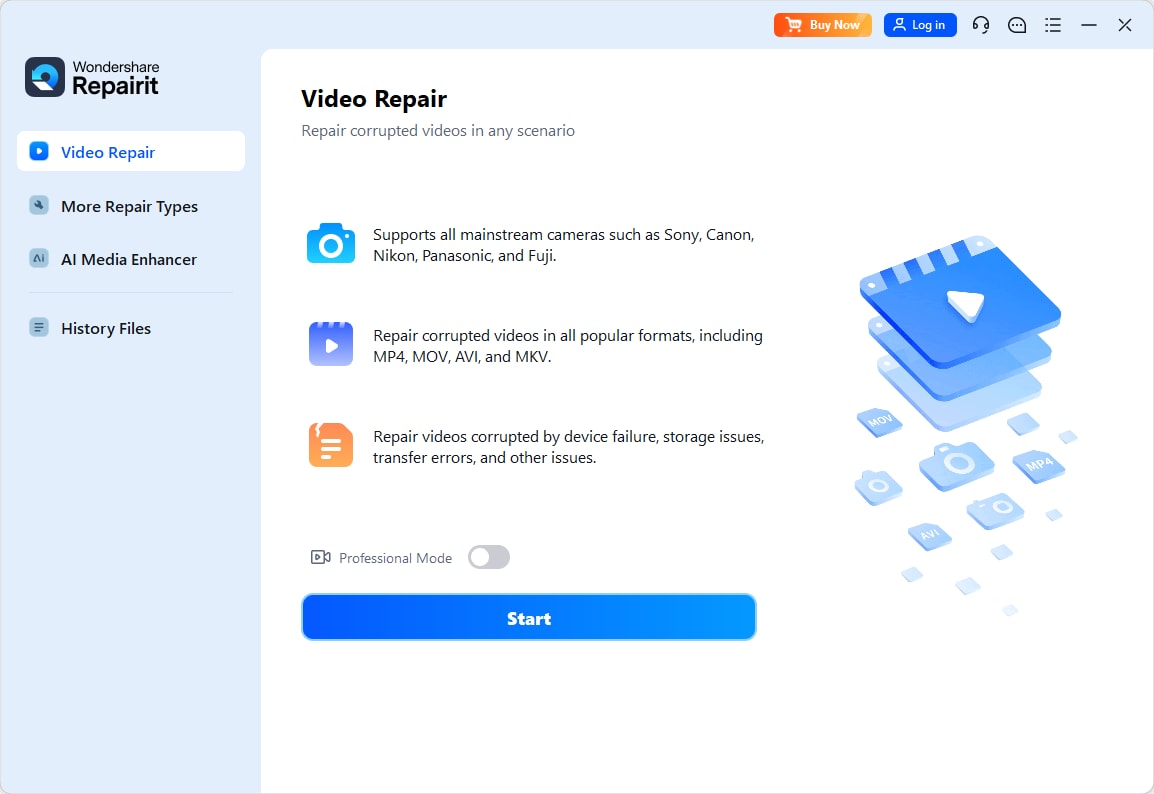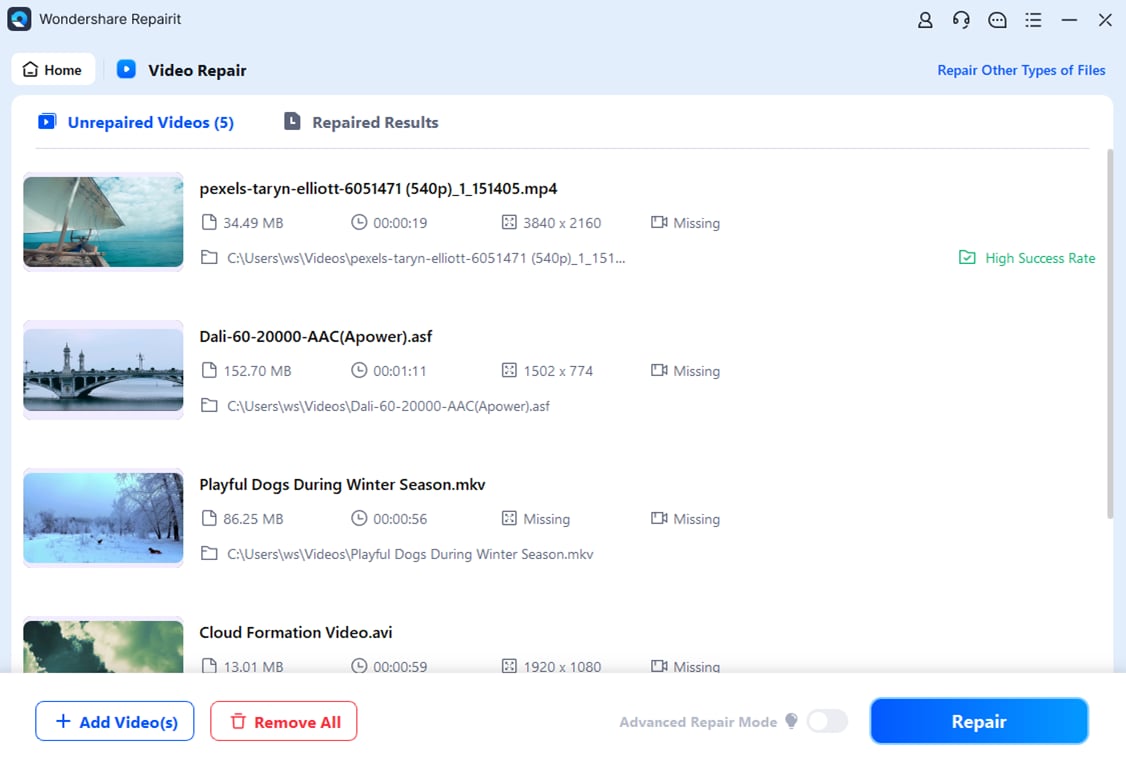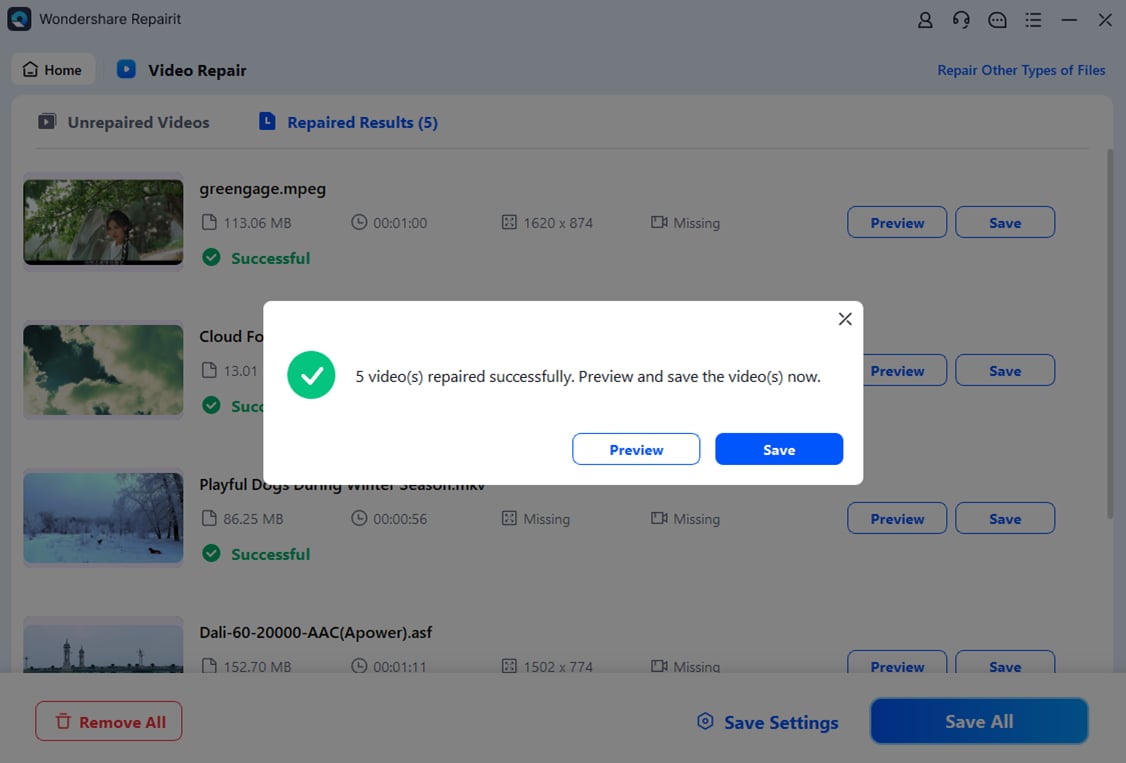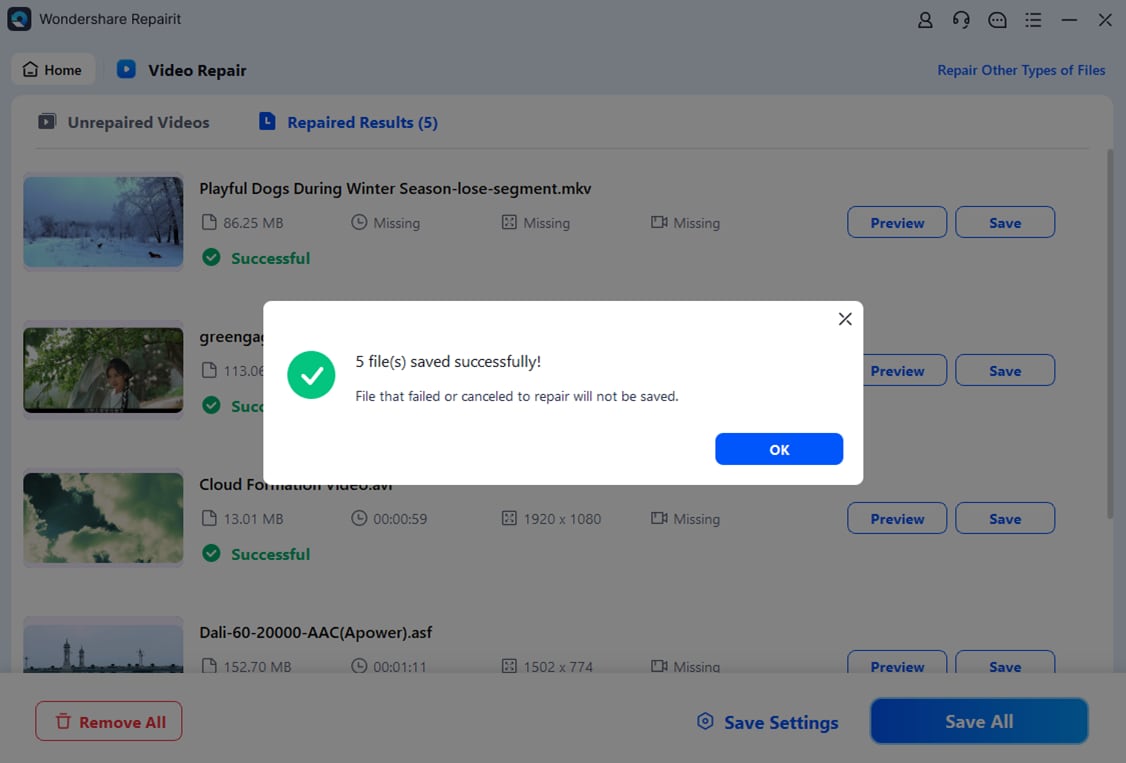A good graphics card (GPU) is significant for gaming, video editing, and computer design. However, even though GPUs are powerful, they can sometimes crash. This results in several problems for your whole system. If your GPU is acting up, there are 5 ways to quickly fix the issue and get back to smooth performance. First, let’s look at why a graphic card keeps crashing.
In this article
Why Is My Graphics Card Keeps Crashing
When faced with the frustrating issue of repeatedly crashing graphics cards, understanding the symptoms and root causes is important to finding a lasting solution.
Symptoms of a Crashed GPU
- Unusual distortions or anomalies in on-screen graphics.
- Sudden halts in system responsiveness, requiring a restart.
- The infamous blue screen error indicates a critical system failure.
Causes of Graphic Card Crashes
- Overheating: Excessive heat buildup can lead to crashes and performance degradation.
- Outdated Graphics Drivers: Using obsolete or incompatible drivers can trigger instability.
- Hardware Issues: Faulty GPU connections, power supply problems, or defective components.
- Software Conflicts: Interactions between programs causing instability and crashes.
Video Card Crash Impact on Gaming Experience
Experiencing graphic card crashes during gameplay goes beyond mere inconvenience; it significantly impacts the overall gaming experience. The interruptions and frustrations can lead to a diminished sense of immersion and enjoyment.
Keep an eye on the following graphics card behavior during gaming:
- Temperature fluctuations during gameplay, as overheating is a common trigger.
- Any error messages related to graphics drivers.
- Frequent occurrences of crashes.
Top 5 GPU Crash Fixes
It is important to address GPU crashes promptly to preserve the gaming experience. Immediate resolution ensures uninterrupted gameplay, prevents potential hardware damage, and allows for the full enjoyment of graphically demanding titles. Take the following 5 fixes to resolve graphics card crashes and optimize your gaming setups.
Fix #1: Update Graphics Drivers
Keeping graphics drivers up-to-date is crucial for optimal GPU performance. Outdated drivers can lead to crashes and compatibility issues. Updated drivers provide performance enhancements, bug fixes, and increased compatibility with the latest games and applications.
You can choose between manual updates for control or automatic updates for convenience. In case of issues with the latest update, having the ability to roll back to a previous driver version provides a quick solution.
Step-by-Step Guide:
Step 1: Click Start, type Device Manager, and open it.

Step 2: Click Display adapters and choose your graphics card.

Step 3: Open the Driver tab and click Update Driver. Next, tick the "Search automatically for updated driver software" button.

Step 4: Pick the "Browse for drivers on your computer" option if you already have a driver. Then, tick the "Let me pick from a list of available drivers on my computer" option.

Step 5: Click Have Disk and Browse to find the new driver's folder. Click Next. Windows has successfully updated your drivers. Tap Close to end the process.

Fix #2: Monitor and Manage Temperature
Overheating is a common cause of GPU crashes. Monitoring and managing temperature helps prevent overheating-related issues. Dust accumulation can impede airflow and lead to overheating.
Regularly cleaning the GPU eliminates this risk. Ensure proper airflow in the PC case by optimizing fan placement and considering additional cooling solutions.
To always monitor your GPU temperature, especially during demanding tasks or in hot conditions, you can use Core Temp. This tool allows you to monitor your CPU temperature across all cores.
Step-by-Step Guide:
Step 1: Download and install Core Temp on your computer.

Step 2: Click the arrow in your taskbar's notification area (system tray).

Step 3: The four numbers you see represent the core temperatures. Tap each number and copy it to your taskbar. Now, the processor temperatures are visible on your taskbar, allowing you to monitor them at all times.
Step 4: In the Core Temp app, click Options then Settings, and go to the Notification Area. Toggle the view to the Highest temperature per processor.

Fix #3: Check for Hardware Issues
Hardware issues can contribute to GPU crashes. Checking and reseating components ensures a secure and stable connection.
- A loose connection can cause instability.
- Inadequate power supply can lead to GPU crashes.
- Faulty RAM or motherboard issues can impact GPU performance.
Step-by-Step Guide:
Step 1: Power off the computer and disconnect it from the power source.
Step 2: Reseat the GPU by removing it from the slot and reinserting it.

Step 3: Check the power supply connections to the GPU.
Step 4: Inspect RAM modules and the motherboard for any visible issues.

Step 5: Consider testing with alternative RAM or on a different motherboard if problems persist.
Fix #4: Resolve Software Conflicts
Conflicts between software can lead to GPU crashes during operation. Identifying and resolving these conflicts is essential for stability. Determine which programs may be causing conflicts with the GPU. Optimize in-game settings to reduce the workload on the GPU and prevent crashes. For older or incompatible games, running in compatibility mode can resolve issues.
Step-by-Step Guide:
Step 1: Identify recently installed or updated programs that may conflict with the GPU.
Step 2: Adjust in-game settings, reducing graphical demands.
Step 3: Right-click on the game executable, go to Properties, and run in compatibility mode if necessary.

Fix #5: Advanced GPU Crash Fixes
For persistent issues, advanced solutions like underclocking and custom fan curves provide more control over GPU performance.
Underclock the GPU
Underclocking the GPU means slowing down its performance to prevent crashes caused by overheating or instability at higher speeds. You decrease temperature and power consumption by reducing the GPU's clock speed.
Step-by-Step Guide:
Step 1: Use a handy tool like MSI Afterburner to monitor GPU temperature and clock speeds.

Step 2: Open the monitoring software and adjust the core and memory clock settings.
Step 3: Gradually lower core and memory clock speeds, testing for stability after each adjustment.

Step 4: Run stress tests or play demanding games to ensure stability. Keep an eye on GPU temperatures to confirm a significant reduction.
Step 5: Use your computer for regular activities and gaming to confirm stability.
Custom Fan Curve
A custom fan curve adjusts GPU fan speeds based on temperature, preventing overheating and crashes. Efficient cooling through a customized profile enhances overall system stability.
Step-by-Step Guide:
Step 1: Use a reliable tool like EVGA Precision X to monitor GPU temperatures and control fan speeds.

Step 2: Access the software and navigate to GPU fan control settings.
Step 3: Design a curve increasing fan speeds as GPU temperature rises. Apply changes in the software for the custom fan curve to take effect.

Step 4: Run stress tests or demanding games to observe GPU response. Adjust fan speeds for specific temperature thresholds if needed.
Step 5: Keep the software active to observe GPU behavior and make adjustments as necessary.
How to Repair Corrupted Files During a GPU Crash
Corrupted files significantly threaten the integrity of important data, potentially impacting the gaming experience. Whether it's game saves, configuration files, or essential documents, the consequences of file corruption can be severe. Addressing this issue promptly becomes imperative to prevent data loss and ensure a seamless gaming environment.
Wondershare Repairit is a comprehensive and specialized solution tailored to rectify corrupted file challenges. This desktop application is designed with the user in mind, offering powerful features to salvage and restore data affected by corruption, ensuring a smooth and uninterrupted gaming journey.
Distinctive Features of Wondershare Repairit Desktop
- Repairit employs cutting-edge algorithms designed to address GPU file corruption.
- The tool has extensive compatibility with various file formats.
- Wondershare Repairit isn't limited to single-file repairs. It handles bulk repairs efficiently. This feature streamlines the repair process.
Step-by-Step Guide
Step 1: Run Repairit Video Repair on your device. Next, tick the +Add button to upload your corrupted files.

Step 2: Once uploaded, the interface will show each file details. Press Repair to commence the process.

After the repair process is complete, press OK to save the fixed files.

Step 3: See the Preview option to view the fixed files. Once done, press Save and choose a destination path.

The process is ongoing. Wait until it’s saved.

Measures to Prevent Graphic Card Keeps Crashing
- Clean internal components, especially the graphics card, enhance airflow and reduce the risk of hardware-related issues.
- Regular updates address bugs, enhance compatibility, and often include optimizations for improved graphics card performance and stability.
- Back up important data to ensure that valuable information and settings can be restored, minimizing downtime and data loss.
- Regularly track GPU performance metrics, such as temperature and usage, to gauge the graphics card's health. Anomalies in performance metrics can indicate potential problems, prompting further investigation and preventive action.
- Enable system health alerts to ensure that you receive notifications about critical issues promptly.
Conclusion
If your computer's graphics card (GPU) keeps crashing, don't worry. Try the solutions above to fix it. Cool down your computer, remove bad drivers, use the right PSU, update drivers, and check system settings. If nothing helps and the crashes persist, it might be time to consider getting a new GPU.
If anything bad happens to your files during a GPU crash, using a reliable repair tool like Wondershare Repairit is strongly recommended. Download the software now and see what it can do.
FAQ
-
What should I do if my GPU is experiencing overheating?
Ensure proper airflow in your computer case, clean the dust from the GPU heatsink, and consider using additional cooling solutions like fans or aftermarket coolers. Also, check if the thermal paste on the GPU is in good condition. -
Is my power supply causing the crashes?
An insufficient or failing power supply can lead to instability. Ensure your power supply unit (PSU) provides enough wattage for your components. Consider upgrading if needed. -
How can I monitor my graphics card temperature?
Use monitoring tools like MSI Afterburner, HWMonitor, or GPU-Z to check your graphics card temperature. High temperatures may indicate a cooling issue.


 ChatGPT
ChatGPT
 Perplexity
Perplexity
 Google AI Mode
Google AI Mode
 Grok
Grok

